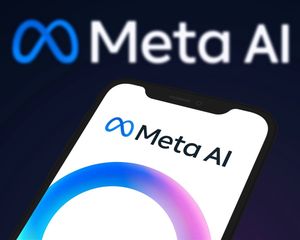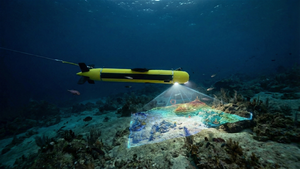Powerful computer vision tech and natural language models turn industry’s leading dataset into AV training gold mine.
What’s New: Mobileye is sitting on a virtual treasure trove of driving data – some 200 petabytes worth. When combined with Mobileye’s state-of-the-art computer vision technology and extremely capable natural language understanding (NLU) models, the dataset can deliver thousands of results within seconds, even for incidents that fall into the “long tail” of rare conditions and scenarios. This helps the AV and state-of-the-art computer vision system handle edge cases and thereby achieve the very high mean time between failure (MTBF) rate targeted for self-driving vehicles.
This press release features multimedia. View the full release here: https://www.businesswire.com/news/home/20220105005968/en/

Like all drivers, autonomous vehicles will face a “long tail” of problems in which a self-driving vehicle encounters something it has not seen or experienced before. An example would be a tractor covered in snow, as shown here. Mobileye’s state-of-the-art computer vision coupled with extremely capable natural language models allows for hard mining of Mobileye’s 200 petabytes of data, delivering thousands of results within seconds, even for extremely rare conditions and scenarios. (Credit: Mobileye, an Intel Company)
“Data and the infrastructure in place to harness it is the hidden complexity of autonomous driving. Mobileye has spent 25 years collecting and analyzing what we believe to be the industry’s leading database of real-world and simulated driving experience, setting Mobileye apart by enabling highly capable AV solutions that meet the high bar for mean time between failure.”
― Prof. Amnon Shashua, Mobileye president and chief executive officer
How It Works: Mobileye’s database – believed to be the world’s largest automotive dataset – comprises more than 200 petabytes of driving footage, equivalent to 16 million 1-minute driving clips from 25 years of real-world driving. Those 200 petabytes are stored between Amazon Web Services (AWS) and on-premise systems. The sheer size of Mobileye’s dataset makes the company one of AWS’s largest customers by volume stored globally.
Large-scale data labeling is at the heart of building powerful computer vision engines needed for autonomous driving. Mobileye’s rich and relevant dataset is annotated both automatically and manually by a team of more than 2,500 specialized annotators. The compute engine relies on 500,000 peak CPU cores at the AWS cloud to crunch 50 million datasets monthly – the equivalent to 100 petabytes being processed every month related to 500,000 hours of driving.
Why It Matters: Data is only valuable if you can make sense of it and put it to use. This requires deep comprehension of natural language along with state-of-the-art computer vision, Mobileye’s long-standing strength.
Every AV player faces the “long tail” problem in which a self-driving vehicle encounters something it has not seen or experienced before. This long tail contains large datasets, but many do not have the tools to effectively make sense of it. Mobileye’s state-of-the-art computer vision technology combined with extremely capable NLU models enable Mobileye to query the dataset and return thousands of results within the long tail within seconds. Mobileye can then use this to train its computer vision system and make it even more capable. Mobileye’s approach dramatically accelerates the development cycle.
What Is Included: Mobileye’s team uses an in-house search engine database with millions of images, video clips and scenarios. They include anything from “tractor covered in snow” to “traffic light in low sun,” all collected by Mobileye and feeding its algorithms. (See sample images).
More Context: With access to the industry’s highest-quality data and the talent required to put it to use, Mobileye’s driving policy can make sound, informed decisions deterministically, an approach that removes the uncertainty of artificial intelligence-based decisions and yields a statistically high mean time between failure rate. At the same time, the dataset hastens the development cycle to bring the lifesaving promise of AV technology to reality more quickly.
Even More Context: Mobileye at CES 2022 | All Mobileye/Autonomous Driving News
About Intel
Intel (Nasdaq: INTC) is an industry leader, creating world-changing technology that enables global progress and enriches lives. Inspired by Moore’s Law, we continuously work to advance the design and manufacturing of semiconductors to help address our customers’ greatest challenges. By embedding intelligence in the cloud, network, edge and every kind of computing device, we unleash the potential of data to transform business and society for the better. To learn more about Intel’s innovations, go to newsroom.intel.com and intel.com.
About Mobileye
Mobileye is leading the mobility revolution with its autonomous driving and driver-assist technologies, harnessing world-renowned expertise in computer vision, machine learning, mapping and data analysis. Our technology enables self-driving vehicles and mobility solutions, powers industry-leading advanced driver-assistance systems and delivers valuable intelligence to optimize mobility infrastructure. Mobileye pioneered such groundbreaking technologies as True Redundancy™ sensing, REM™ crowdsourced mapping, and Responsibility Sensitive Safety (RSS) technologies that are driving the ADAS and AV fields toward the future of mobility. For more information: www.mobileye.com.
Forward-Looking Statements
Statements in this media release that refer to future plans and expectations are forward-looking statements that involve a number of risks and uncertainties. Words such as “anticipates,” “expects,” “intends,” “goals,” “plans,” “believes,” “seeks,” “estimates,” “continues,” “may,” “will,” “would,” “should,” “could,” and variations of such words and similar expressions are intended to identify such forward-looking statements. Statements that refer to or are based on estimates, forecasts, projections, uncertain events or assumptions, including statements relating to future products and technology and the availability and benefits of such products and technology, expectations regarding customers, market opportunity, and anticipated trends in our businesses or the markets relevant to them, also identify forward-looking statements. Such statements are based on current expectations and involve many risks and uncertainties that could cause actual results to differ materially from those expressed or implied in these forward-looking statements. Important factors that could cause actual results to differ materially are set forth in Intel’s SEC filings, including the company’s most recent reports on Forms 10-K and 10-Q, which may be obtained by visiting our Investor Relations website at www.intc.com or the SEC’s website at www.sec.gov. Intel does not undertake, and expressly disclaims any duty, to update any statement made in this news release, whether as a result of new information, new developments or otherwise, except to the extent that disclosure may be required by law.
© Intel Corporation. Intel, the Intel logo and other Intel marks are trademarks of Intel Corporation or its subsidiaries. Other names and brands may be claimed as the property of others.
View source version on businesswire.com: https://www.businesswire.com/news/home/20220105005968/en/
Contacts
Robin Holt
1-503-616-1532
robin.holt@intel.com






